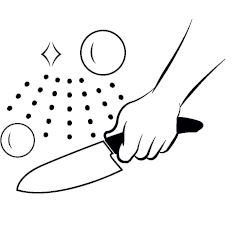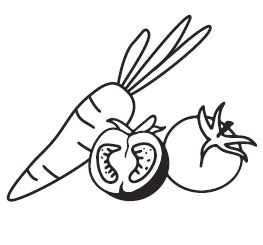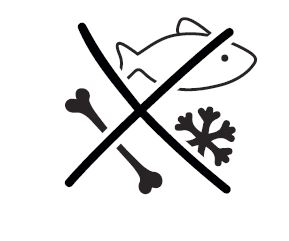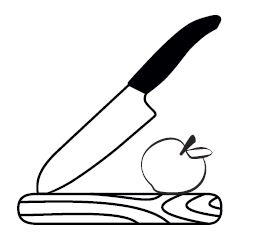With proper care and maintenance, your Kyocera knives will provide you long-lasting performance. Our knives are designed to be used in a smooth, slicing motion because of the razor-sharp edge making it effortless, unlike a forceful up-and-down chopping motion that is needed with heavier steel knives.
FOR EVERYDAY MEAL PREPARATION
- Fruits
- Vegetables
- Herbs
- Boneless meats and fish
Our cutlery should not be used where force is needed to prep harder foods. Steel knives should be used to cut hard, frozen or heavy rind type fruits because of the force and flex required to cut them. An advanced ceramic blade is so hard that it is not flexible, yet this hardness characteristic is what gives the blade its long-lasting sharpness. The following applications involve twisting and flexing the blade, which require a more flexible material than advanced ceramic and will void the knife warranty.
AVOID USING ON HARD OR FROZEN FOODS
- Cut heavy rind fruits such as winter squash, pumpkin, coconut, and hard melons
- Slice block cheese or any frozen foods
- Remove an avocado pit
- Carve, pry and/or debone meat
- Smash garlic or other items with the side of the blade
USE APPROPRIATE CUTTING SURFACES
Always use an appropriate cutting surface such as plastic, bamboo, or wood cutting boards. Avoid cutting on glass or marble cutting boards. After use, hand wash [surface stains can be scrubbed off with baking soda] and store in a wood block, tray, or sheath. Do not store any knife loosely in a drawer or sink for safety and to avoid damage. By following the care and use guidelines, you will enjoy your knives for years.

HANDWASH AFTER USE
After use, hand wash [surface stains can be scrubbed off with baking soda] and store in a wood block, tray, or sheath. Do not store any knife loosely in a drawer or sink for safety and to avoid damage. Blades can also be sanitized with a mild bleach solution and will not damage the blade. By following the care and use guidelines, you will enjoy your knives for years.



